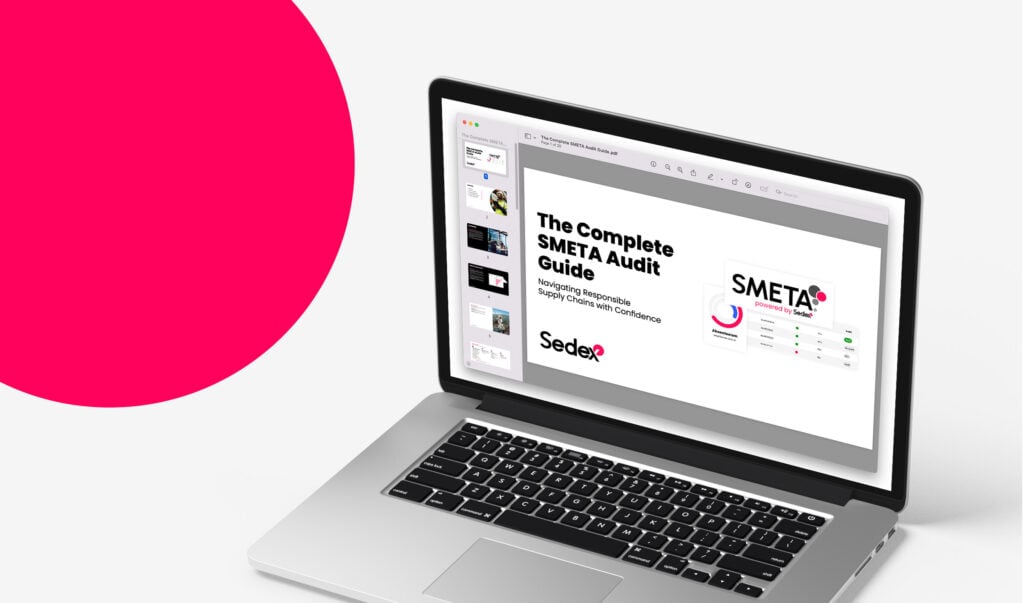Global supply chain data reveals gender inequalities in the workplace and highlights the power of data for driving equality
Our latest insights report, “Driving gender equality through data on global supply chains”, highlights gaps between men and women at work globally and how data is a powerful tool to progress gender equality.
Key insights
- Collecting gender-disaggregated data enables businesses to better understand the issues that disproportionately affect women in the workplace, and support businesses’ action to improve women’s representation and working conditions
- The report analyses data from 42,000 business sites, 143 countries, and 12.5 million workers to give businesses greater visibility of gender gaps
- Our data reveals that women make up nearly half (43%) of the global workforce, a quarter (27%) of management positions and a third (31%) of supervisor roles
- Just 7% of worksites separate worker grievance data by gender, yet this is key for understanding the workplace issues that have a greater impact on women and what remediation actions are having a positive impact
- Sedex provides recommendations on what businesses can do to promote gender equality, with data collection being a first key step.
New analysis from data on the Sedex platform draws insights on gender roles within global supply chains.
Our analysis highlights that, among other insights, women are less likely to be promoted, with an average of 38% of promotions in the past year going to women and 62% going to men.
Without gender data, businesses cannot understand where women are disadvantaged and what progress is being made on women’s economic empowerment.
Working with our members, we’re helping them to identify, through our platform, where the gender risks are, and how they can support better working conditions through their partners across the supply chain.
Inequality between men and women in management positions, for example, can be a barrier to better pay and professional development opportunities, and can also be a factor of increased risks of violence and harassment against women in the workplace.
Our analysis highlights that, among other insights, women are less likely to be promoted, with an average of 38% of promotions in the past year going to women and 62% going to men.
The data was collected through the Sedex Self-Assessment Questionnaire (SAQ) on the our ethical data platform, which contains information from tens of thousands of businesses in supply chains with millions of workers across the globe. This data helps businesses at all stages of supply chains drive their gender goals and improve equality within work.
Female representation in roles and sectors
The report reveals that in certain sectors and roles, gender imbalances are particularly prominent. These typically follow traditional gender norms of male-dominant and female-dominant industries.
For example, the data reveals that women’s workforce participation is 69% in human health activities, 62% in the apparel manufacturing sector, and 60% in services to buildings and landscape activities (including cleaning).
However, women make up just 26% in computer programming, consultancy and related activities, 21% in security and investigation and just 14% in specialised construction roles. These three sectors require specialised, more technical skills, and are also typically better paid.
The agriculture and apparel manufacturing sectors, where women are highly represented, have the largest gaps between men and women when comparing workforce composition against the workplace equality data points included in the report. These sectors are also recognised as having labour-intensive and low-skilled work within their supply chains, are reliant on migrant labour, and often have tough conditions that put workers’ health and safety at risk.
Oxfam’s research shows that to tackle gender inequality in supply chains, companies need to collect the right data.
Gender-disaggregated data enables companies along the value chain to identify the workplace issues that disproportionately impact women; understand the barriers to women’s representation; and establish where the gender pay gaps are. This can then be used to support women’s access to dignified work and human rights
Sedex recommendations for businesses and public bodies
- Set goals and targets that promote gender equality. Review your organisation’s responsible business strategies to identify priorities to support progress on women’s economic empowerment.
- Identify and commit to collecting key gender data indicators. Use data that can help you assess and measure these priority areas.
- Start with data that is more easily available. This includes information on the numbers of men and women in a workforce. This data can feed into risk assessment activities to build up information on more vulnerable groups of workers and the areas they work in. A lack of data does not have to mean a lack of action.
- Collaborate with peers and others to align strategies. Engage with suppliers to collect more, and better, gender data.
How to use Sedex to collect gender data
Worksite questionnaires and audits are useful tools for gathering information on women in businesses and supply chains.
- Get started with the Sedex Site Profile. This captures basic information about workers at businesses’ own sites and those of their suppliers registered on the Sedex platform – including workers’ genders, contract type, and migrant status.
- Build your understanding with gender-disaggregated data on decision-making positions, such as management and supervisors. The Sedex SAQ will help you gather this information from suppliers.
- Go further by looking at data on issues with a disproportionate impact on women, such as absenteeism and worker turnover rates. You can use both our SAQ and SMETA audit to gather this data, which you can then analyse through a tailored gender dashboard in our data platform.
It’s never been more important to have data on women’s representation in business, to help empower women and improve their working conditions.
Through this report, we’re calling on all businesses to further identify and commit to collecting key gender data indicators, which will make it easier to identify where women aren’t being treated equally at work. If you can identify this, you can start to make a real difference across the globe for gender equality.
For more information on how you can become more actively involved in promoting gender equality with Sedex, please contact us at communications@sedex.com
Note on the data
‘Worksite data’ is information collected about suppliers’ workforces and business sectors (the Site Profile) and answers from the Sedex Self-Assessment Questionnaire (SAQ). At the time of analysis, around 42,000 sites had completed the questionnaire on the Sedex platform. The percentage breakdown of male and female workers is based on 60,000+ sites that are Sedex members and have provided basic information about their workforce profile and business sector on the Sedex platform (the


